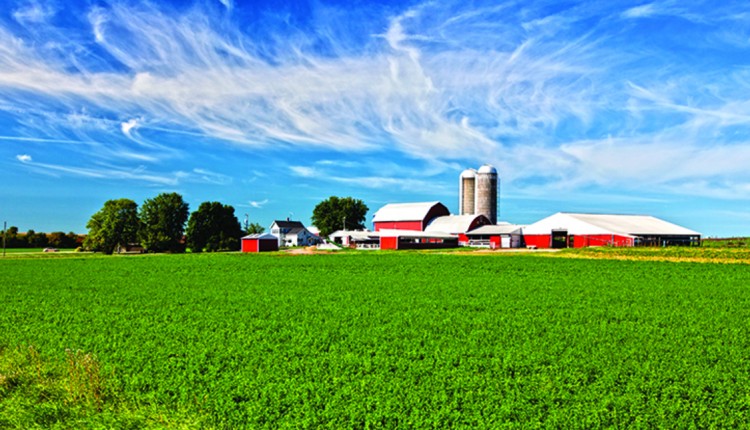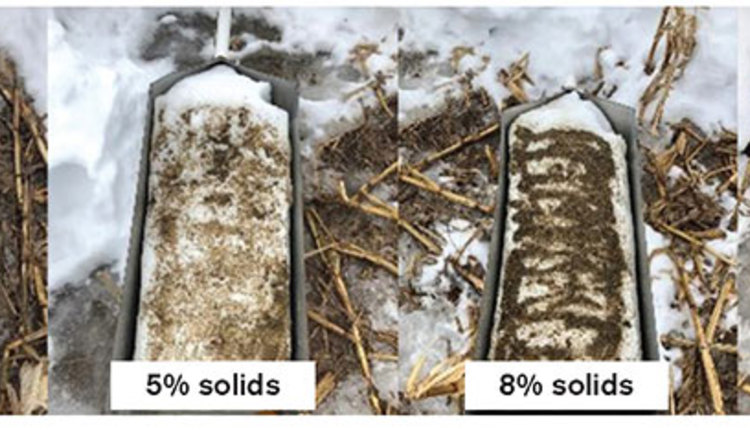 Soil type, fertility, tillage intensity, manure application, and crop rotation all affect greenhouse gas emissions; modeling methods must account for this variation.
Soil type, fertility, tillage intensity, manure application, and crop rotation all affect greenhouse gas emissions; modeling methods must account for this variation. While agricultural greenhouse gas emissions are relatively small, the dairy industry is stepping up in a big way to reduce emissions. Practices such as improved crop rotations can help mitigate greenhouse gas emissions while promoting soil carbon sequestration and greater crop yield potential. Given the importance of CO2 as a greenhouse gas and the large amount of land in agriculture globally, crop and soil management practices that can sequester carbon and boost yield potential are needed to reduce crop production risk and better withstand weather extremes in general.
Modeling the impact
Simulation models are routinely used to estimate greenhouse gas emissions from agriculture and mitigation potential of various practices. All simulation models require reliable field measurements for calibration and validation of predictions. Calibration and validation are critical parts of any agroecosystem model and particularly for greenhouse gases, since emissions are often highly variable and closely tied to changes in weather and soil conditions.
Soil type, tillage intensity, fertility, manure application, and crop rotation all affect greenhouse gas emissions. It is important for field scale greenhouse gas models to account for these agronomic factors to make useable predictions and gain the confidence of producers and the industry. Recent and ongoing research at the Marshfield Agricultural Research Station (MARS) in north central Wisconsin has focused on quantifying greenhouse gas emissions from corn silage, hay, and grazed pastures under differing fertility and manure application strategies.
A look at manure
A recent study at MARS measured greenhouse gas emissions from no-till corn silage plots that received a one-time application of solid manure. The study was initiated in a ryegrass field with somewhat poorly drained soil. A one-time application of solid dairy heifer manure (8.2 dry tons per acre) and separated dairy manure solids (8.7 dry tons per acre) was applied to the soil surface without incorporation in September 2020. Greenhouse gas emissions were monitored in 2020 before and after manure was applied and for three years of no-till corn production from 2021 to 2023. A control of no manure was included for comparison where corn received starter fertilizer and 70 pounds of nitrogen per acre as urea at the V5 to V6 growth stage each season.
Results showed that cumulative CO2 emissions were greater for the manure-treated plots in 2021, and that was not surprising given the greater total carbon inputs from manure application (Figure 1). Interestingly, N2O emissions were low or negative each year, with manure application having little effect on cumulative N2O trends (see figures). There has been considerable emphasis on N2O because it has a 273-fold greater global warming potential value per molecule compared to CO2 for a 100-year period.
The lack of N2O emission in our study was notable compared to other studies. Recent work has stressed the importance of reporting both positive and negative N2O fluxes from cropland. The term “negative” N2O emission means that soils are consuming N2O at the time of measurement, so not accounting for substantial negative emissions artificially inflates annual N2O totals.
Soil aeration status affects denitrification potential and conversion ratios of nitrate (NO3-) to N2O and N2. More poorly drained conditions tend to favor greater conversion of NO3- to N2 and, therefore, low or “negative” N2O emissions. At the same time, poor aeration also favors greater CH4 emission, since methanogenesis can only occur in extremely low oxygen environments and anaerobic conditions.
We hypothesize that the combination of poorly drained soil and no-tillage limited N2O emission for the reasons outlined above while exacerbating CH4 emission. Other studies have also reported larger CH4 emissions when soils are not tilled, particularly for imperfectly drained fields. Accumulation of residue at the surface under no-till conditions in our study may have further enhanced conditions for CH4 emission by providing a concentrated source of labile organic carbon at the soil surface. Ongoing research at MARS is clarifying the role of tillage, soil drainage, and manure application on greenhouse gas emissions.
Future measurements
Results from our trial and other studies indicate that capturing field-by-field variation in soil type, drainage, tillage, and nutrient inputs is critical for greenhouse gas models to accurately estimate whole farm GHG emissions and carbon footprints. The Ruminant Farm Systems model (RuFaS) is a whole farm, daily time step model in development led by scientists at the U.S. Dairy Forage Research Center in Madison, Wis., and university and industry partners. The RuFaS model simulates major nutrient biophysical processes underpinning farm production including N2O emissions. A future version will include routines for estimating CO2 and CH4 emissions from animal, manure, and cropping systems.
Field monitoring of greenhouse gas emissions in different cropping systems, soils, and agricultural regions is important for calibrating RuFaS and other field-scale greenhouse gas models. This is a critical step given the multiple differences in climate, cropping systems and management practices on U.S. dairy farms and in other countries. Looking forward, continued and reliable field-based greenhouse gas emission measurements will be important for greenhouse gas inventorying, model validation, and carbon markets in some cases.

This article appeared in the May 2025 issue of Journal of Nutrient Management on page 20-22.
Not a subscriber? Click to get the print magazine.








